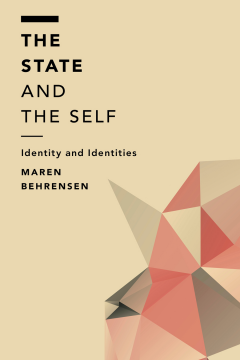
Additional Information
Book Details
Abstract
In this fascinating and timely book, Maren Behrensen facilitates a conversation between philosophy and the ‘practitioners’ of identity. What makes a person the same person over time? This question has been studied throughout the history of philosophy. Yet philosophers have never fully engaged with the ‘practitioners’ of identity, namely technology developers, lawyers, politicians, sociologists and applied ethicists. The book offers an answer to the metaphysical question of personal identity and tries to show how this question is of immediate relevance to the various practices of identity management – particularly in the fields of administration, counter-terrorism activities, and gender reassignment. Behrensen argues that identity documents and other markers of identity (such as biometric samples) are not merely representations of, but actually help constitute, personal identity. The metaphysical fact of personal identity lies in these supposedly ‘external’ features. The book goes on to focus on issues relating to ‘trust’ and ‘security’, terms central to the ethics of new technologies and in work on new identity management technologies.
Maren Behrensen is a post-doctoral researcher at the Institute for Christian Social Ethics at the University of Münster, Germany.
Table of Contents
| Section Title | Page | Action | Price |
|---|---|---|---|
| The State and the Self | Cover | ||
| Contents | vii | ||
| Acknowledgements | ix | ||
| 1 The Metaphysics of Personal Identity | 1 | ||
| 1.1 The Curious Case of Benjaman Kyle | 1 | ||
| 1.2 The Primacy of the Practical | 4 | ||
| 1.3 The No-Self View | 9 | ||
| 1.4 Is Relation R Really What Matters? | 12 | ||
| 1.5 Three Separatist Solutions | 14 | ||
| 1.5.1 Lockeans | 16 | ||
| 1.5.2 Kantians | 17 | ||
| 1.5.3 Animalism | 20 | ||
| 1.6 Pronoun Magic | 23 | ||
| 2 Narrativity and Normativity | 31 | ||
| 2.1 Identity as Social Reality | 32 | ||
| 2.2 Why Narrative? | 34 | ||
| 2.3 The Psychological Narrativity Thesis | 37 | ||
| 2.4 Forensic and Administrative Narratives | 43 | ||
| 2.5 Epistemic and Moral Concerns | 45 | ||
| 2.6 Exposing the Fraudsters | 48 | ||
| 2.7 Dehumanization and Depersonalization | 53 | ||
| 3 Identity and Modern Statecraft | 59 | ||
| 3.1 ‘Seeing Like a State’ | 61 | ||
| 3.2 The Personal Number | 64 | ||
| 3.3 Whose Power? | 68 | ||
| 3.4 Identities as Brands | 71 | ||
| 3.5 High Modernism and Postmodernism | 74 | ||
| 4 Identity, Security and Trust | 85 | ||
| 4.1 Epistemic Gaps | 87 | ||
| 4.2 Trustworthy Identification | 93 | ||
| 4.3 Hypochondriac Identities | 98 | ||
| 4.4 The Mistrust Loop | 101 | ||
| 5 Conclusion | 115 | ||
| Bibliography | 121 | ||
| Index | 131 | ||
| About the Author | 133 |
